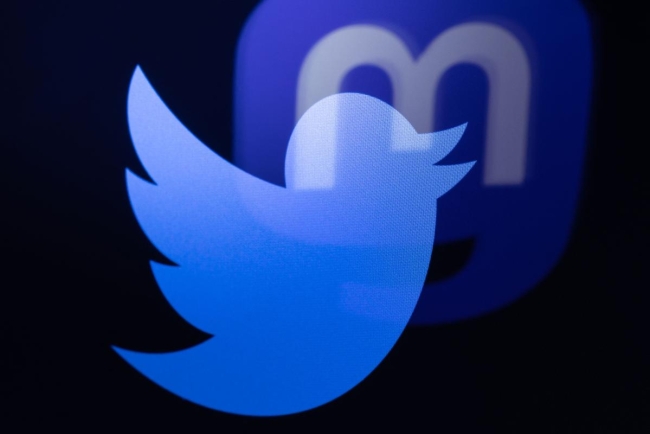You have /5 articles left.
Sign up for a free account or log in.

JOEL SAGET/Contributor/Getty Images
So far, Twitter endures.
On Oct. 28, Elon Musk tweeted, “The bird is freed,” signaling what would become his chaotic takeover of the social media platform. Soon after, he fired huge numbers of employees, including many focused on security. He monetized the blue-check badge, which was previously free and suggested authenticity. He also announced plans to reinstate accounts that had been banned for threats or spreading misinformation. Of note, former president Donald Trump’s account was reinstated after it had been banned for tweets in violation of the “glorification of violence” policy.
Whether Twitter is destined for a fast or slow downfall, or no downfall at all, remains to be seen. But many in academe have already reassessed their futures on the social media platform and changed their tweeting habits.
Some in higher ed have deleted their Twitter accounts. Some have set their accounts to private. Others remain public but have stopped posting. Some only post to encourage followers to join them on an alternate social media platform. Some have joined alternatives for a just-in-case option. Others are all in on alternative sites, even when frustrated by the learning curve.
When those who remain on Twitter do post, many do so less frequently, and they often find that their posts are not engaging followers as reliably.
“It’s a gradual hollowing out of the networks we have tended to take for granted,” said Mark Carrigan, the MA Digital Technologies, Communications and Education program director at the Manchester Institute of Education at the University of Manchester. Carrigan is among those who left Twitter once Musk took over.
Matthew Nyquist, assistant professor of mass media, film and video at Washburn University, had not dramatically changed his tweeting behavior following the Musk purchase. Yet on Nov. 13, he received a pop-up message indicating that his account’s ability to like and retweet others’ posts had been restricted.
“Only thing I’ve done that could remotely be connected is liking some of the tweets showing Elon’s disastrous tenure at Twitter. Free speech never wins in autocratic regimes or software,” he tweeted. Nyquist has approximately 2,900 followers. Twitter did not respond to a request for comment about Nyquist's restricted account.
“I was really surprised that an account like mine could get limited for liking a couple of tweets that were critical of Musk when use of the N-word [on the platform] went up like 500 percent,” Nyquist told Inside Higher Ed. Nyquist, whose ability to like and retweet has since been restored, would like to stay on Twitter for the film community there. However, he has joined Mastodon and Hive as possible alternatives.
Since Musk’s takeover, many academics have gravitated to Mastodon—a decentralized, open-source social network that has gained more than one million active users. “Decentralized” means that the network is a collection of websites rather than only one. New users have reported that registration on Mastodon has a learning curve. First, they must find an instance—a server that functions as a home base—to join. That can be a bit tricky, as there are more than 10,000 instances, not all instances accept new members and not all instances accept everyone.
Once a user finds and joins a Mastodon instance, they may engage with others across the network. Many academics ultimately report that Mastodon’s learning curve is surmountable. Adjusting their Twitter-influenced mind-set to what constitutes a social media platform, however, is harder.
“People ask me about Mastodon. ‘Who owns it?’ ‘Could Elon buy Mastodon?’” said Casey Fiesler, associate professor of information science at the University of Colorado at Boulder, whose research considers online platform migrations. “The idea of a social media network not being one platform and not being owned by someone is very outside of all other experiences that we’ve had.”
Fiesler remains on Twitter but is spending more time on Mastodon, which she reports has been a “particularly good space” for interacting with other academics and “a better place than anticipated” for engaging with nonacademics. To her surprise, her Mastodon engagement rate is now much higher than on Twitter. For example, she recently posted the same poll on both platforms. Both received nearly the same number of votes, even though she has four times as many followers on Twitter as on Mastodon.
To complicate matters, Mastodon is not the only alternative. Some academics have joined Hive in the hope of re-establishing a community of peers or engaging with the public about their teaching and research, Fiesler said. Hive Social has had an influx of new users in the past month. Those who join Hive are not required to identify a server before joining, Fiesler said, but many have had other trouble, including joining the wrong Hive site.
“Everything’s been happening quickly,” Fiesler said, speculating that there is a nonzero chance that Twitter as a platform will cease to exist. “I don’t know how big that chance is, but it is nonzero.”
In this sense, Twitter’s ability to endure despite rumors of its possible demise appears to be part of the problem. That is, for as long as the social media site averts implosion, its users may fall along a continuum that ranges from “committed to staying” to “committed to leaving,” including every possible level of engagement that exists in between, such as keeping one toe in Twitter waters while exploring other options.
As a result, any observable academic migration away from Twitter has been gradual and dispersed.
“If a transition to post-Twitter social networking within higher education remains an entirely individualized matter, then it will be difficult, if not impossible, to reform the networks which coalesced through academic Twitter,” Carrigan said.
The individualized trend accommodates some exceptions, Carrigan said. For example, the Association of Internet Researchers and Humanities Commons will set up Mastodon instances. But maintaining and moderating a Mastodon instance takes time, resources and expertise, and so far Carrigan has not seen professional societies step up.
“My worry is that lots of casual users of Twitter will transition to Mastodon expecting it to be a direct replacement,” Carrigan said. Some who do may lose interest when they “discover how different the architecture and end user experience are in practice, particularly if they haven’t been able to adapt it to their interests.”
Twitter may have lost more than one million users since Musk took over, according to MIT Technology Review. But numbers purporting to track the decline in engagement may be underestimates, according to Fiesler.
“A lot of people are leaving without deactivating their account, for good reasons,” Fiesler said, noting that she has observed many of the changed behaviors in fellow academics. “The advice not to delete your account is very good, as if you delete it, then someone can impersonate you.”




